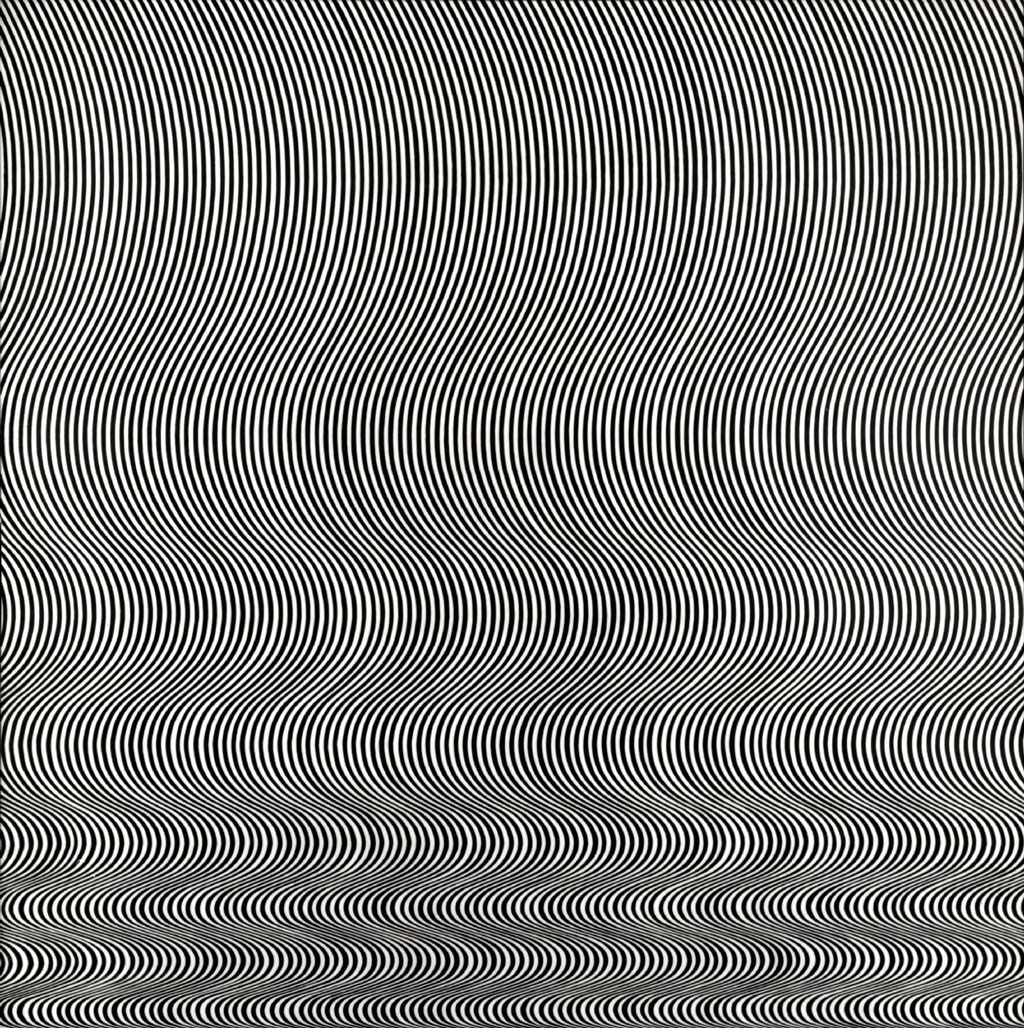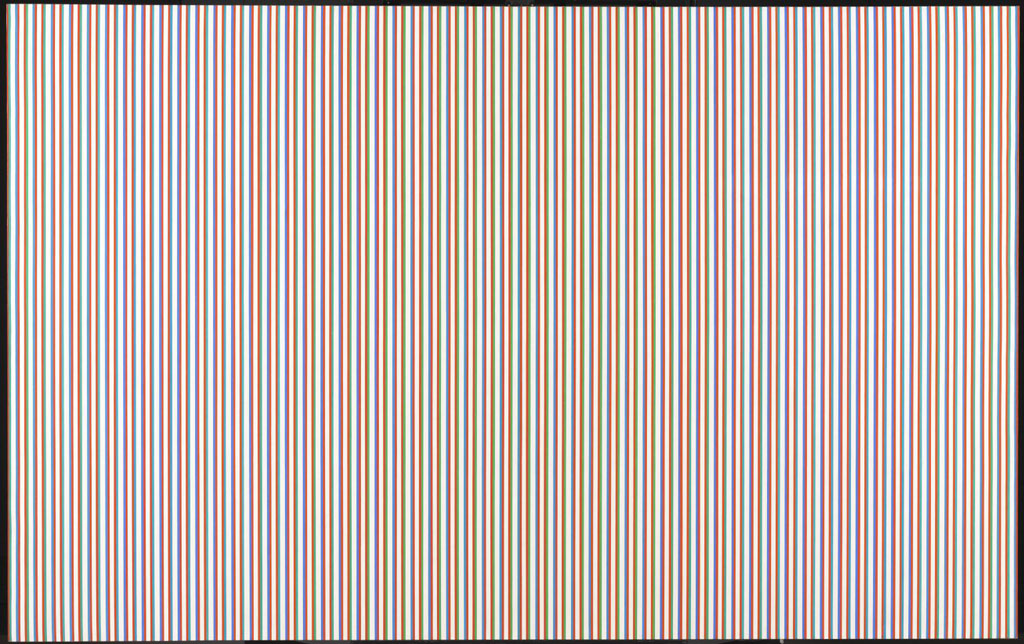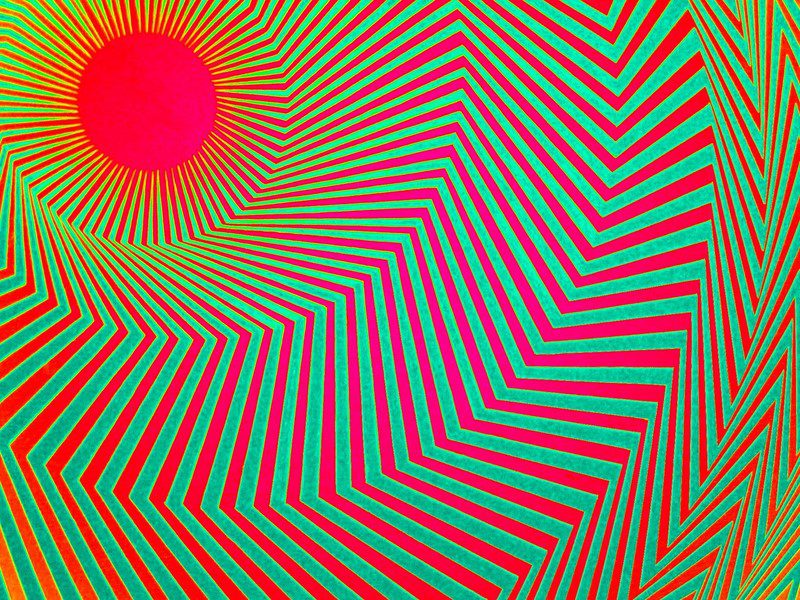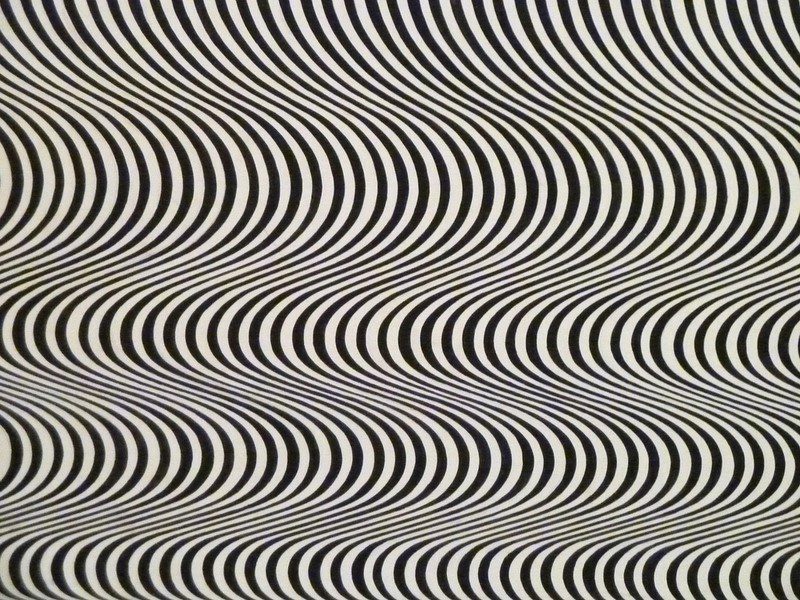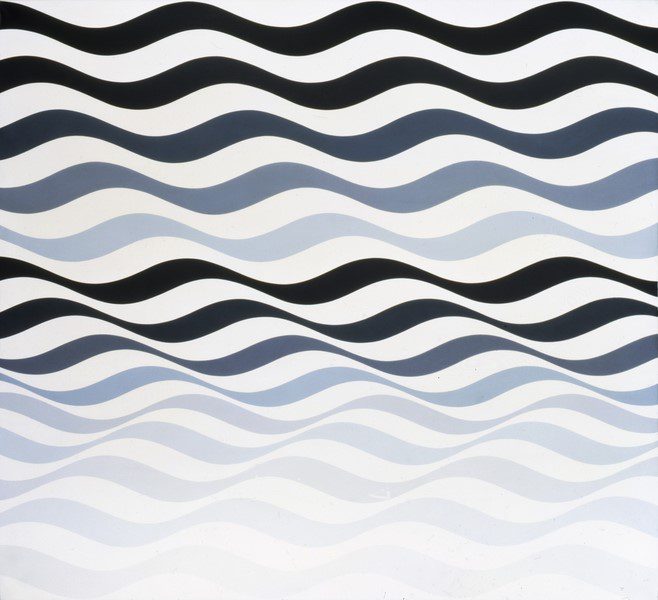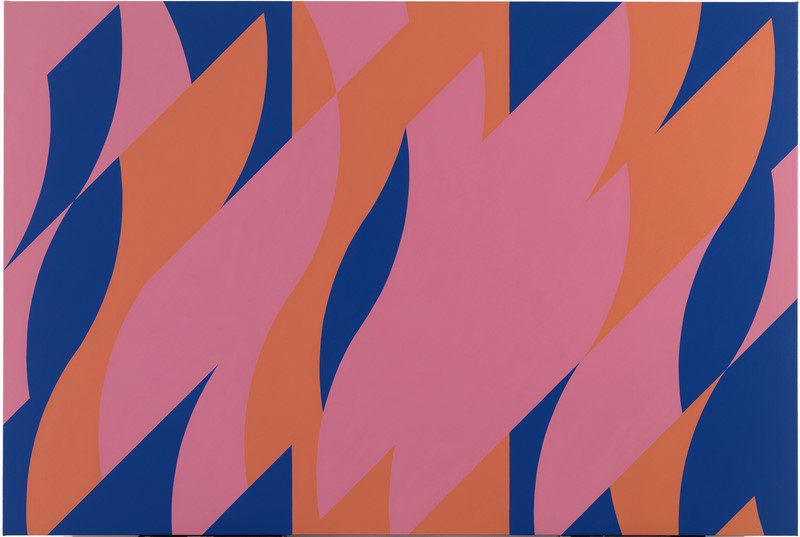TRACES: Bridget Riley
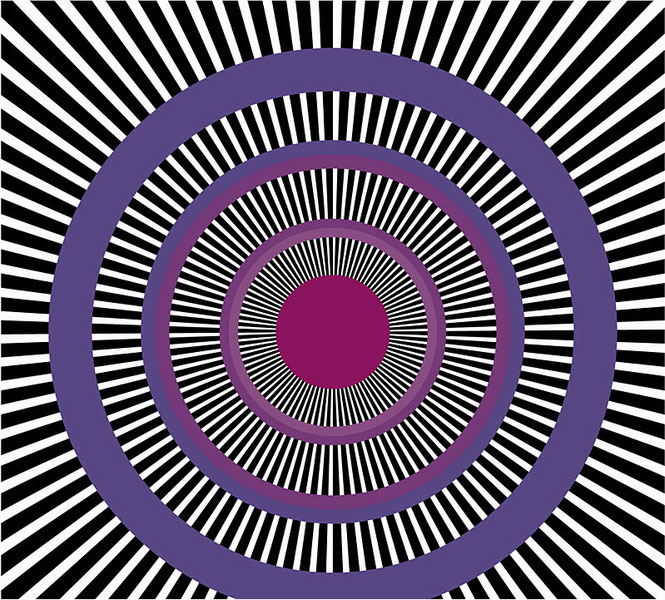 Today is the occasion to bear in mind the British artist Bridget Riley born in London (24/4/1931- ) is an English painter who is one of the foremost exponents of op art. She currently lives and works in London, Cornwall and in the Vaucluse in France. This column is a tribute to artists, living or dead, who have left their mark in Contemporary Art. Through documents or interviews, starting with: moments and memories, we reveal out from the past-unknown sides of big personalities, who left their indelible traces in time and history…
Today is the occasion to bear in mind the British artist Bridget Riley born in London (24/4/1931- ) is an English painter who is one of the foremost exponents of op art. She currently lives and works in London, Cornwall and in the Vaucluse in France. This column is a tribute to artists, living or dead, who have left their mark in Contemporary Art. Through documents or interviews, starting with: moments and memories, we reveal out from the past-unknown sides of big personalities, who left their indelible traces in time and history…
By Efi Michalarou
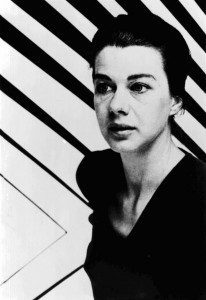 Bridget Riley attended Cheltenham Ladies’ College and then studied art at Goldsmiths College (1949–52), and later at the Royal College of Art (1952–55). The large Whitechapel Gallery exhibition of Jackson Pollock, in the winter of 1958, was to have a major impact on her. Her early work was figurative with a semi-impressionist style. Between 1958 and 1959 her work at the advertising agency showed her adoption of a style of painting based on the pointillist technique. Around 1960 she began to develop her signature Op Art style consisting of black and white geometric patterns that explore the dynamism of sight and produce a disorienting effect on the eye. In 1961, with partner Peter Sedgley, she visited the Vaucluse plateau in the South of France, and acquired a derelict farm, which would eventually be transformed into a studio. Works in this style comprised her first 1962 solo show at Musgrave’s Gallery One. It was during this time that Riley began to paint the black and white works for which she is best known. They present a great variety of geometric forms that produce sensations of movement or color. In the early 1960s, her works were said to induce sensation in viewers as varied as seasick and sky diving. Her paintings have, since 1961, been executed by assistants from her own endlessly edited studies. In 1965, between 23/2-25/4/65 she participated in the exhibition “The Responsive Eye”, curated by William C. Seitz, at the Museum of Modern Art in New York City, which is the first exhibition of op art. The exhibition was enormously popular with the public, though less so with the critics. Critics dismissed op art as portraying nothing more than fool the eye. Regardless, op art’s popularity with the public increased, and op art images were used in a number of commercial contexts. Bridget Riley tried to sue an American company, without success, for using one of her paintings as the basis of a fabric design. Riley began investigating colour in 1967, the year in which she produced her first stripe painting. In the early 1970s, Riley began travelling extensively. After a trip to Egypt in the early 1980s, where she was inspired by colorful hieroglyphic decoration, Riley began to explore color and contrast. In some works, lines of color are used to create a shimmering effect, while in others the canvas is filled with tessellating patterns. Typical of these later colourful works is “Shadow Play”. Some are titled after particular dates, others after specific locations. Following a visit to Egypt in 1980–81 Riley created colours in what she called her “Egyptian palette” and produced works which capture the spirit of the country, ancient and modern, and reflect the colors of the Egyptian landscape. In 1983 for the first time in fifteen years, Riley returned to Venice to once again study the paintings that form the basis of European colorism. In Delos (1983), for example, blue, turquoise, and emerald hues alternate with rich yellows, reds and white.
Bridget Riley attended Cheltenham Ladies’ College and then studied art at Goldsmiths College (1949–52), and later at the Royal College of Art (1952–55). The large Whitechapel Gallery exhibition of Jackson Pollock, in the winter of 1958, was to have a major impact on her. Her early work was figurative with a semi-impressionist style. Between 1958 and 1959 her work at the advertising agency showed her adoption of a style of painting based on the pointillist technique. Around 1960 she began to develop her signature Op Art style consisting of black and white geometric patterns that explore the dynamism of sight and produce a disorienting effect on the eye. In 1961, with partner Peter Sedgley, she visited the Vaucluse plateau in the South of France, and acquired a derelict farm, which would eventually be transformed into a studio. Works in this style comprised her first 1962 solo show at Musgrave’s Gallery One. It was during this time that Riley began to paint the black and white works for which she is best known. They present a great variety of geometric forms that produce sensations of movement or color. In the early 1960s, her works were said to induce sensation in viewers as varied as seasick and sky diving. Her paintings have, since 1961, been executed by assistants from her own endlessly edited studies. In 1965, between 23/2-25/4/65 she participated in the exhibition “The Responsive Eye”, curated by William C. Seitz, at the Museum of Modern Art in New York City, which is the first exhibition of op art. The exhibition was enormously popular with the public, though less so with the critics. Critics dismissed op art as portraying nothing more than fool the eye. Regardless, op art’s popularity with the public increased, and op art images were used in a number of commercial contexts. Bridget Riley tried to sue an American company, without success, for using one of her paintings as the basis of a fabric design. Riley began investigating colour in 1967, the year in which she produced her first stripe painting. In the early 1970s, Riley began travelling extensively. After a trip to Egypt in the early 1980s, where she was inspired by colorful hieroglyphic decoration, Riley began to explore color and contrast. In some works, lines of color are used to create a shimmering effect, while in others the canvas is filled with tessellating patterns. Typical of these later colourful works is “Shadow Play”. Some are titled after particular dates, others after specific locations. Following a visit to Egypt in 1980–81 Riley created colours in what she called her “Egyptian palette” and produced works which capture the spirit of the country, ancient and modern, and reflect the colors of the Egyptian landscape. In 1983 for the first time in fifteen years, Riley returned to Venice to once again study the paintings that form the basis of European colorism. In Delos (1983), for example, blue, turquoise, and emerald hues alternate with rich yellows, reds and white.
* Riley has also received the international prize for painting at the 1968 Venice Biennale.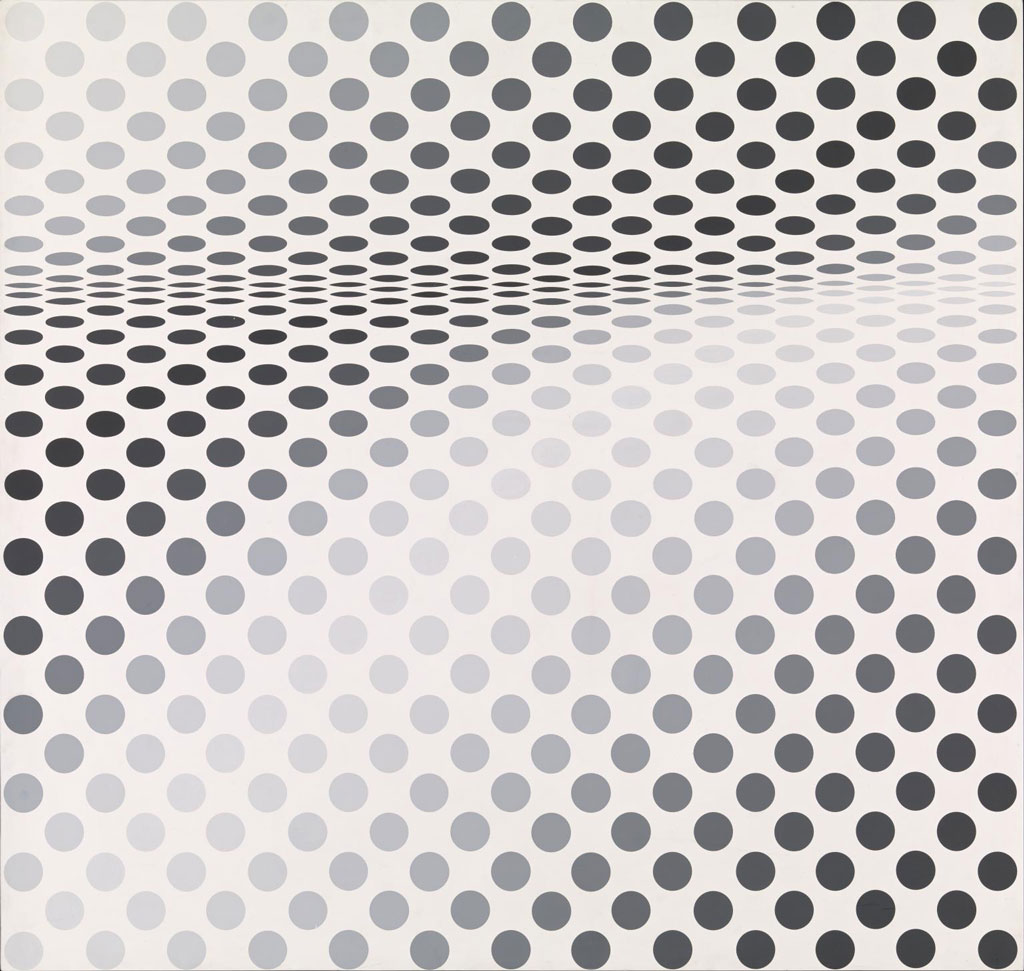

![Untitled [Fragment 5/8] 1965 by Bridget Riley born 1931](http://www.dreamideamachine.com/web/wp-content/uploads/2018/04/P07108_10.jpg)
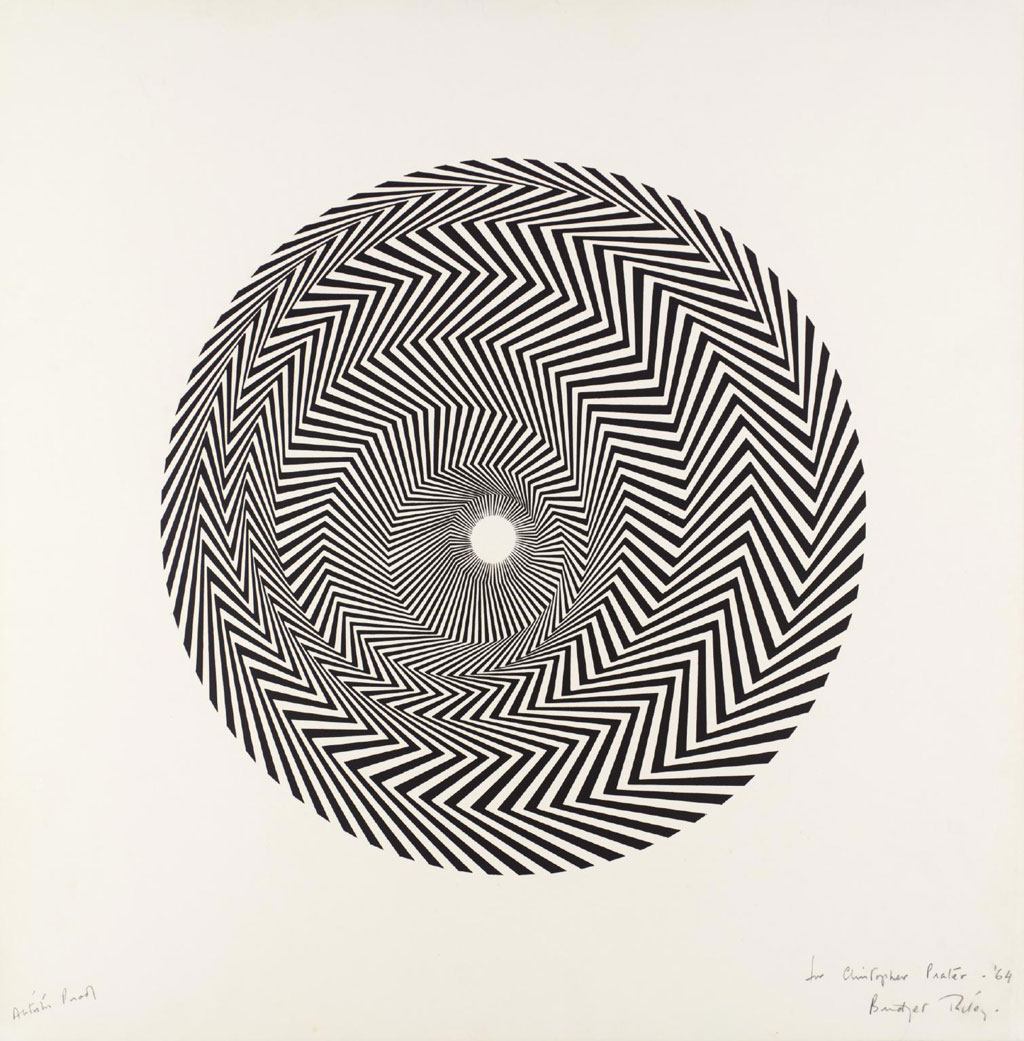
![Untitled [Fragment 2/10] 1965 by Bridget Riley born 1931](http://www.dreamideamachine.com/web/wp-content/uploads/2018/04/P07105_10.jpg)
